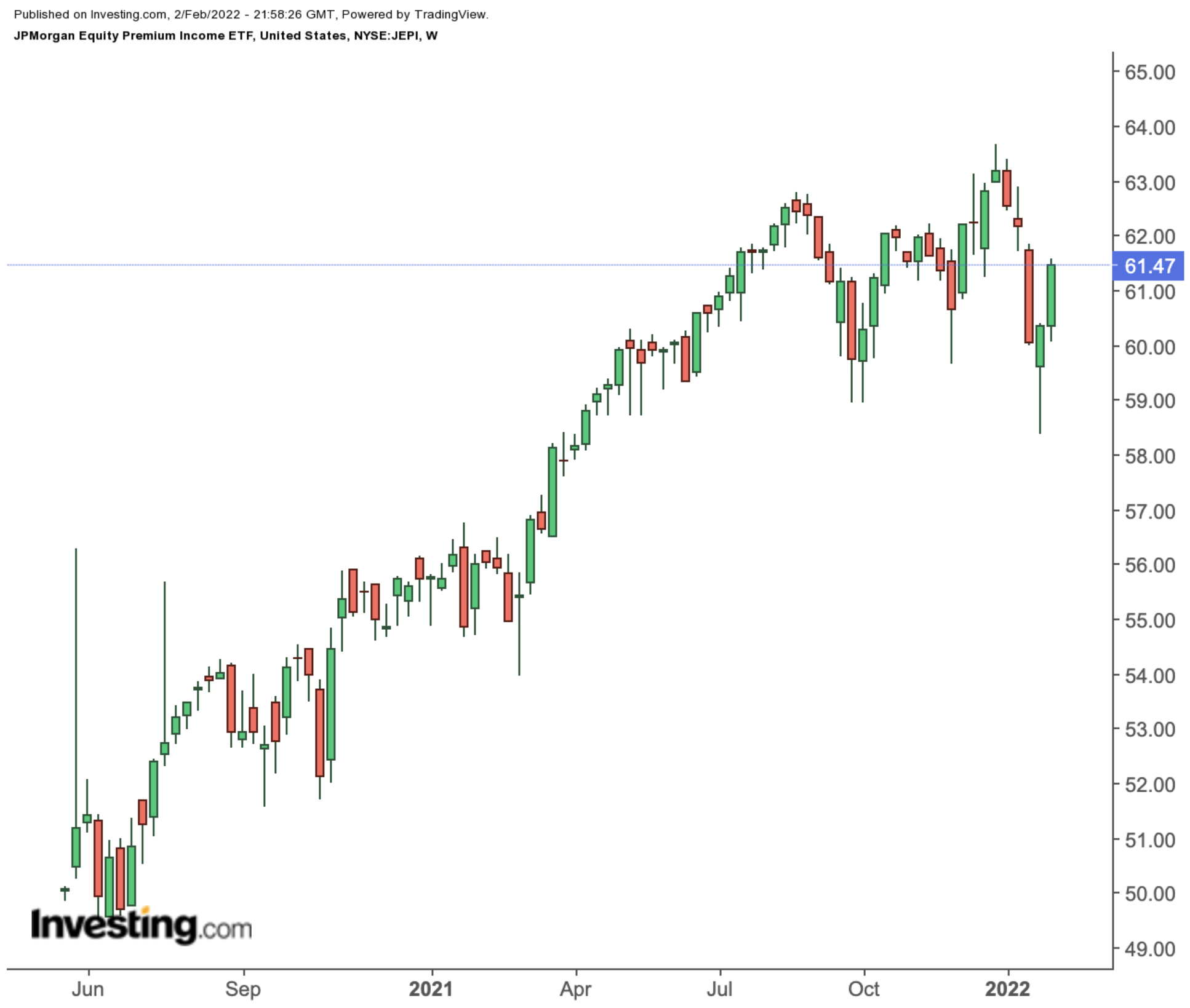February started on a higher note. But after January's rout on Wall Street, volatility looks poised to persist, at least for the next few weeks. As a consequence, many investors are looking to diversify their portfolios.
In the current inflationary context, one strategy that gets significant attention is steady yields.
Today's article introduces two exchange-traded funds (ETFs) that could be appropriate for passive-income seekers, such as those approaching or in retirement or those seeking to pay for some regular expenses.
1. Global X SuperDividend US ETF
- Current Price: $20.75
- 52-week range: $17.51 - $21.40
- Dividend yield: 5.27%
- Expense ratio: 0.45% per year
The Global X SuperDividend US ETF (NYSE:DIV) gives access to 50 of the highest dividend-yielding US equities. The fund, which started trading in March 2013, makes monthly distributions.

Consumer staples have the highest slice in DIV with 23.8%. Next come utilities (15.5%), real estate (12.3%), industrial (11.7%), financials (9.2%), energy (9.0%) and health care (7.4%). The top 10 holdings comprise about a quarter of net assets of $704 million.
Pharma giant Pfizer (NYSE:PFE); BP Midstream Partners (NYSE:BPMP), which is a master limited partnership; real estate investment trusts (REIT) Public Storage (NYSE:PSA) and CubeSmart (NYSE:CUBE), which focus on self-storage facilities; public utility American Electric Power (NASDAQ:AEP) make up some of the leading stocks in the portfolio.
In the past 12 months, DIV is up almost 17% and saw a multi-year high in January. However, since then, several names in the fund have come under pressure, and the ETF lost about 0.5% year-to-date (YTD). Nonetheless, we like the diverse and robust names in the portfolio and believe the fund should be on investors' watchlists.
2. JP Morgan Equity Premium Income ETF
- Current Price: $61.47
- 52-week range: $53.96 - $63.67
- Dividend yield: 7.04%
- Expense ratio: 0.35% per year
Our next fund, the JP Morgan Equity Premium Income ETF (NYSE:JEPI), invests in large-capitalization (cap) US equities with dividends and also generates monthly income by selling covered call options. Distributions are made monthly. Fund managers also aim for low volatility and capital growth.

JEPI currently has 105 holdings, while no company comprises more than 2% of the portfolio.
In terms of sub-sectors, we see health care (12.2.%), IT (11.6%), industrials (11.5%), financials (10.0%), consumer staples (10.9%), utilities (7.1%) and consumer discretionary (6.9%).
Among the stocks in the fund are the diversified energy group DTE Energy (NYSE:DTE); pharma names AbbVie (NYSE:ABBV) and Eli Lilly (NYSE:LLY); technology giants Microsoft (NASDAQ:MSFT) and Alphabet (NASDAQ:GOOGL); insurance company Progressive (NYSE:PGR); professional services and consulting name Accenture (NYSE:ACN); financial services group Mastercard (NYSE:MA); and logistics heavyweight United Parcel Service (NYSE:UPS).
JEPI is up over 10.8% in the past 12 months and hit a record high in December 2021. However, it declined 2.3% since the start of 2022. By comparison, the S&P 500 index is down 4% YTD and comes with a yield of around 1.3%, while JEPI's current yield is over 7%.
Regular readers of this column would know that we believe covered calls could find a place in retail portfolios. However, setting up options trades may not be appropriate for most investors. Therefore, an ETF like JEPI could take the guesswork out of options investing.
Other similar funds to consider would include:
- FT Cboe Vest S&P 500 Dividend Aristocrats Target Income ETF (NYSE:KNG)
- Global X NASDAQ 100 Covered Call ETF (NASDAQ:QYLD)
- Global X S&P 500® Covered Call ETF (NYSE:XYLD)
- Invesco S&P 500 BuyWrite ETF (NYSE:PBP)
Understandably, several factors affect how a given call writing strategy of a fund works. For instance, distribution yields would depend on how the written calls expired (i.e., worthless or in-the-money). Therefore, investors should study a given fund closely before investing.
